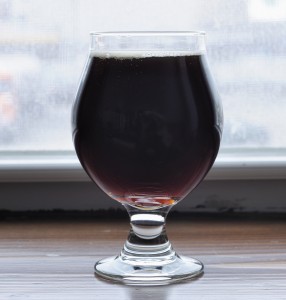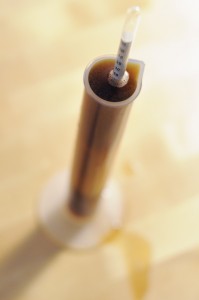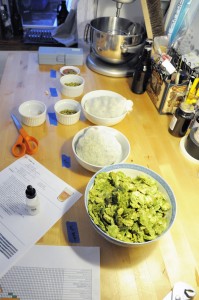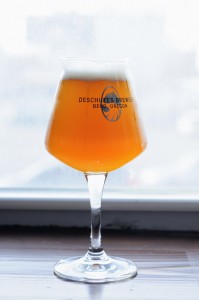 Stylistically, I find IPA to be one of the craft beers categories with the most variation. There are many popular IPAs that have almost no malt character, while others are relatively robust and judicious in their application of toasty and caramel flavors. Some are absolute hop bombs with robust flavors of citrus, pine resin, grass, spice, and tropical fruit, while others tend to portray a more nuanced hop character. All IPAs should lean towards the bitter side, but some are so excruciatingly bitter they make you wonder if you’re damaging your tooth enamel. Some IPAs are daringly dry while others retain a hint of residual sweetness. Many are lower in alcohol—and could be argued to be pale ales—while others blur the line between single and double IPA. With this recipe, I was shooting for something towards the middle, in terms of alcohol, malt, and bitterness, while taking hop flavor and aroma to an extreme level.
Stylistically, I find IPA to be one of the craft beers categories with the most variation. There are many popular IPAs that have almost no malt character, while others are relatively robust and judicious in their application of toasty and caramel flavors. Some are absolute hop bombs with robust flavors of citrus, pine resin, grass, spice, and tropical fruit, while others tend to portray a more nuanced hop character. All IPAs should lean towards the bitter side, but some are so excruciatingly bitter they make you wonder if you’re damaging your tooth enamel. Some IPAs are daringly dry while others retain a hint of residual sweetness. Many are lower in alcohol—and could be argued to be pale ales—while others blur the line between single and double IPA. With this recipe, I was shooting for something towards the middle, in terms of alcohol, malt, and bitterness, while taking hop flavor and aroma to an extreme level.
Tasting Notes:
Judged as a BJCP Category 14b. American IPA.
Aroma (8/12):
High level of hop aroma which prominently features grapefruit zest upfront and a touch of pine resin in the background. There is a whisper of stone fruit (peach?) in the aroma that is quite pleasant. Some grassy, dry hop characters come out as the beer warms which lends an earthy and spicy component to the aroma. The hops are perhaps a bit muddled in their presentation. The malt aroma is very low and a bit indistinct letting the hops shine. There is no perception of caramel malt on the nose. No alcohol, DMS, or other off-aromas. Very clean fermentation character with no perceptible ester.
Appearance (2/3):
The beer is a deep golden hue with hits of red that push the beer to being nearly a copper color. There is a very distinct haze, but not nearly as muddy as some commercial beers I’ve sampled. A nice off-white, sticky head persists until the beer is finished.
Flavor (14/20):
This beer has a very strong hop flavor that couples with a firm hop bitterness. The flavors are somewhat reminiscent of the white pith of a citrus fruit. There is a touch of slightly vegetal/grassy hops on the finish. The relative depth of color in this beer would make you think there would be some fairly strong malt components to the flavor. This is not the case. The beer exhibits only a hint of light toasty malt that is difficult to extract from the large amount of hop flavor. The bitterness is clean and crisp, but perhaps a bit too intense. There is a hint of residual malt sweetness that is a touch heavy.
Mouthfeel (3/5):
Medium-bodied with a firm, clean finish. There is just a hint of residual sweetness in the finish. The beer is slightly over-carbonated giving the beer a prickly mouthfeel which improves once the gas subsides.
Overall Impression (6/10):
This is a nice IPA that showcases American hops in all of their brashness and intensity. There aren’t any of the tropical notes that are found in some of the most popular contemporary examples which may detract from in its popularity with beer geeks who tend to chase the latest novel hop flavors. This beer is right in the middle of the BJCP style, but could get dinged for not having quite enough malt depending on what a particular judge is looking for. In future recipe iterations, I plan to slightly lower the hop bitterness and further dry the beer out to allow for the hop flavors to shine even more brightly. Additionally, I will likely not use Columbus again for this beer as I feel it contributed to some of the rougher hop flavors this beer exhibits.
Total: 33/50 Very Good
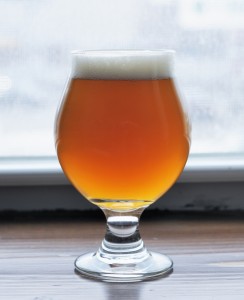 Tasting Notes:
Tasting Notes:
